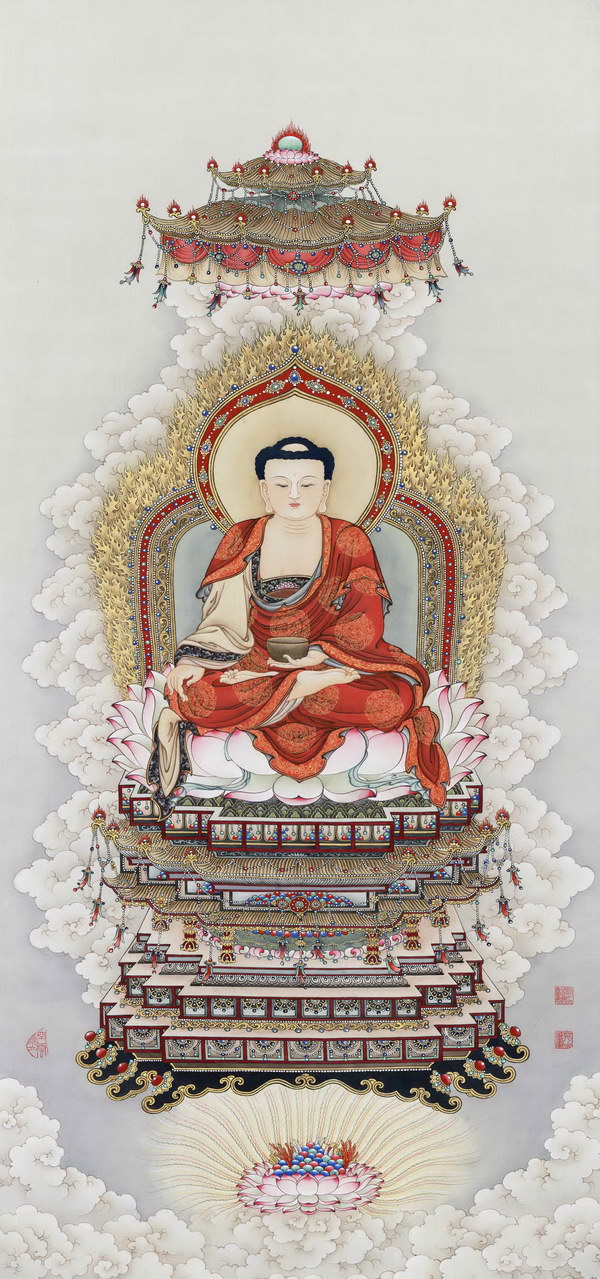
Xia Jing Shan is a traditional Chinese painting and calligraphy master in Taiwan. He specializes in paintings of Buddhist subject matters, and is well versed in the refined style of fine-brush with heavy color, creating delicate lines and unique lifelike images that one could appreciate tirelessly. There are many papers published focusing on his paintings, including “A Study on Xia Jing Shan‟s Buddhist Paintings” by Yang Chi-Hsia; “A Brief Discussion on Arhats Painting‟ of Xia Jing Shan‟s Buddhist Paintings” by Chen Bing-Hung; and Discovery of Innovation and Insights of Xia Jing Shan‟s Buddhist Painting Themes in the Field of Visual Art” by Chuang Li-Hua, which all contain in-depth examinations on the profound meanings embodied in Xia‟s paintings. Moreover, Xia usually inscribes on most of his paintings, and the contents are worthy of in-depth studies. Some are simply inscriptions of the specific painting‟s title, while others are Buddhist scriptures or poems and verses by ancient sages. There are also some containing verses and words written by the painter. For example, the artist had inscribed on one of his paintings depicting Zhong Kui gazing at the sea with the time, location of the creation,and his signature (Kyoto, year 87, by Xia Jing Shan) and also the following words, “Waves come and go but are still contained in the sea.Wishful thinking comes and goes. Nature is the source of the self; benevolent one, do you agree?” Inspired by the roaring waves in the painting, the words convey the stillness of the heart, and by concluding with a question, a sense of friendly and lighthearted iveliness is evoked. Dictions on paintings by Xia could be compared and examined by placing in the context of Taiwanese classical poems inscribed on paintings, whereby various relationships between inscriptions on paintings and the paintings themselves could be explored. The fate of many early Taiwanese poems inscribed on paintings is that the poems have remained but the paintings have long disappeared. If a masterful painter like Xia could pick up his paintbrush once again to interpret and compose new paintings for those poems, it would undoubtedly be deemed a beautiful occasion for the art world.
